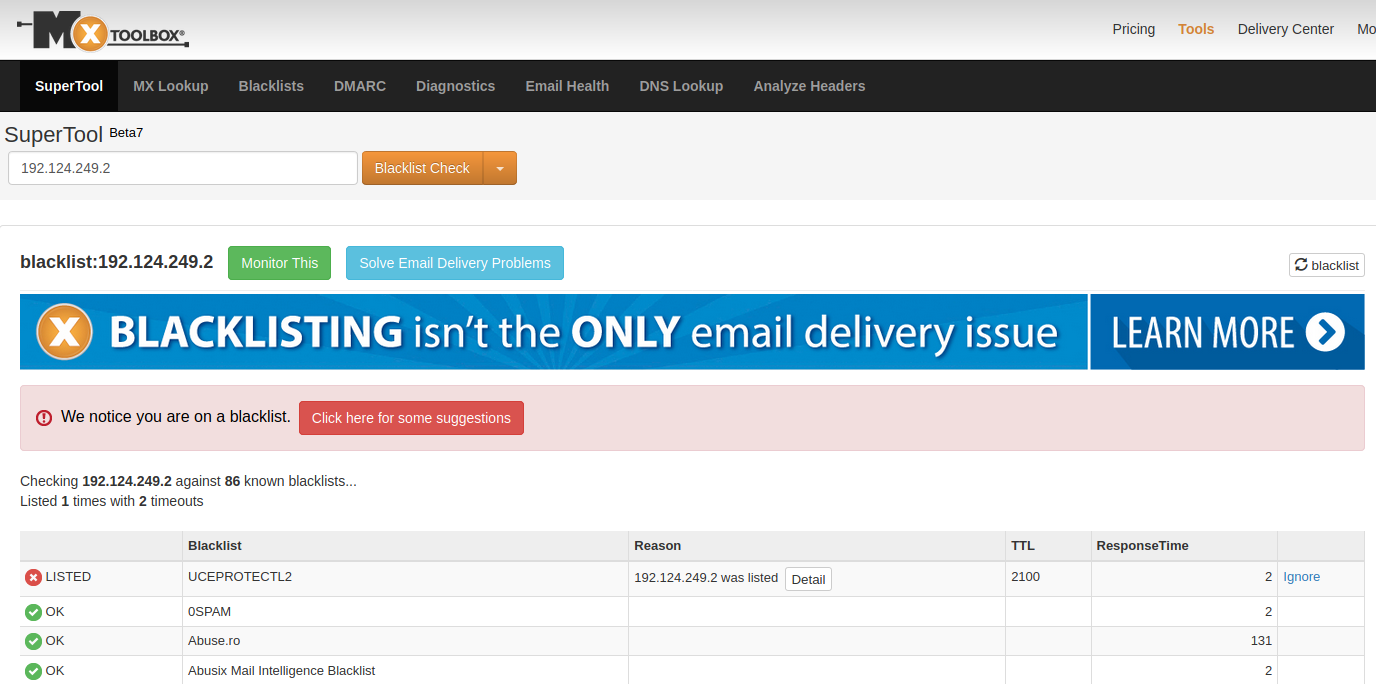

- #Realtime blackhole list verification#
- #Realtime blackhole list series#
The Security Information Exchange (SIE), from Farsight Security Inc., isĭesigned with privacy in mind. Network configuration of a threat and the surrounding network on the Internetįor improving the value and impact of threat intelligence and research. This information provides customers with insights about the Security solutions that empower customers with meaningful and relevant The end result is the highest-quality and most comprehensive passive DNSĭatabase, DNSDB, of its kind-with more than 100 billion unique DNS resourceįarsight Security’s mission is to make the Internet a safer place. Filtering: Channel 204, Processed DNS Data (which used by DNSDB).Verification: Channel 208, DNSDB Verified Data.Deduplication: Channel 207, DNSDB Deduplicated Data.
#Realtime blackhole list series#
Passes through a series of processing phases:

Once the data is sent to SIE, the data then Passive DNS sensors and contributed to Farsight’s Security Information Exchange Passive DNS (pDNS) begins with raw DNS traffic that is observed and collected by Only source of “ ground truth” information for the Internet.
Sending an email?: Email uses DNS to resolve the IP address of the mail exchange server your message should be delivered toĭNS serves as early warning and detection solution for phishing, spam, maliciousĪnd suspicious behaviors, and other attacks. Visiting a website?: Your system uses DNS to resolve the IP address of the hostname for the website you are attempting to access. Transactions begin with a DNS query and response. Why Passive DNS (pDNS)?ĭNS is a critical component of Internet communication and almost all Internet A channel in SIE may be the result from analyzing the data or a subset Network traffic blocked by Intrusion Detection Systems (IDS) and firewall devicesĮach unique set of data in SIE is known as a channel and the data acquiredįrom a specific channel can be customized to meet the needs of each customer,Įnabling you to subscribe to and access only the channels needed to solve your. Connection attempts from malware-infected systems (as seen by a sinkhole). Phishing URLs and associated targeted brands. Relevant and useful for practitioners in various technology roles: The diverse set of data available from SIE includes the following and is Farsight also applies unique and proprietary methods for improving usability of the data, directly sharing the refined intelligence with SIE customers and DNSDB®, one of the world’s largest passive DNS (pDNS) databases. SIE collects and provides access to more than 200,000 observations per-second of raw data from its global sensor network. (now a part of DomainTools), is a scalable and adaptable real-time data streaming and information sharing platform. The Security Information Exchange (SIE), from Farsight Security® Inc. About Security Information Exchange (SIE) Suffixes are a superset of the Top Level Domains (TLDs). 
See the Public Suffix List for information on the current list of official suffixes. Domains and hostnames are checked for historic observationsįor more information about Channel 204 Processed DNS Data,please refer to the SIE Technical Overview guide.ġ A “ base domain” is one label followed by a suffix.
#Realtime blackhole list verification#
The DNS data available from channel 204 isĪfter the deduplication and verification phases from the Passive DNS Processing These channels use Channel 204 Processed DNS Data, that is used by DNSDB, as These changes may include new RR types, new or changed IP addresses, or a change in the authoritative name servers for a domain
Channel 214: DNS Changes: Domains, hostnames, or record data that is unknown to DNSDB, either because the data is for a new domain or hostname or because the record data for a domain or hostname has changed. Both the RRname ( left-side) and Rdata ( right-side) of a DNS resource record (RR) are checked Channel 213: Newly Observed Hostnames (NOH): Hostnames, also known as Fully Qualified Domain Names (FQDNs), that have never been observed in DNSDB. Channel 212: Newly Observed Domains (NOD): “ Base domains 1” that have never been observed in DNSDB. Channel 211: Newly Active Domains: Previously seen domains observed in channel 204 after 10 days of inactivity. Newly Observed Domains (NOD) is one of several channels that tracks domain This enablesĬustomers to observe and monitor when new domains become active for the first Intelligence for domains observed in DNSDB for the first time. Channel 212, the SIE Newly Observed Domains (NOD) channel is a source of DNS







 0 kommentar(er)
0 kommentar(er)
